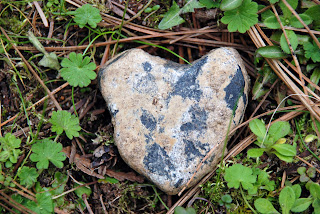 |
| MK Sandford Photographer, Kucera tree, alive and well. |
Advances in cell
biology, genomics, psychology have given us the gift of being able to experience
the Natural world in such a way that it doesn’t take away the joy and the mystery of it.
Science that brings us closer to understanding the inner life of all beings.
Consider this video animation of our cellproteins undertaking the task of identifying
an unwelcome guest in our cells and escorting him out. The immune system is
responsible for keeping our body clean and orderly. It works day and night to keep things in order. Take a breath and listen to the music and watch your body at work.
In her biography, A Feeling for the Organism,
Evelyn Fox Keller quotes Barbara McClintock explaining her loving attachment to
plants.
“Animals can
walk around, but plants have to stay still to do the same things, with
ingenious mechanisms. For instance, … if you pinch a leaf of a plant you set
off electrical impulses. You can’t touch a plant without sending out an
electrical pulse. There is no question that plants have all kinds of
sensitivities. They do a lot of responding to their environment. They can do almost anything
you can think of. … In the summertime, when you walk down the road, you’ll see
that the tulip leaves, when it’s a little warm, turn themselves around so that
there backs are toward the sun. You can just see where the sun hits them and
where it doesn’t hit. Actually within the restrictive areas in which they live,
they move around a great deal. “
Indeed when we can know that
within a stately grove of alders, pines, firs, and cedars billions of cells are
alive and thriving we can more simply enter into a dialogue with a tree understanding
that it knows we are there. Trees tell us things. They tell us about the drought,
and when rain is coming. Droopy leaves are so common that we take them for
granted. Yet those leaves Cry out "I Thirst".. Where have we heard those words before?
Does a tree have a brain, central
organizing principle that guides it’s inner workings? Plant's guidance systems are decentralized. Each cell has
its own ‘brain’ called a network of cell nuclei. These nuclei are in constant communication with each other via their cell's membranes. Possibly
because they are stationary trees have no need for quick responses, or to think
their way out of a situation, their responses are slow and steady. Plants respond to different levels of
excitation. I wonder if plants respond
to anger or sadness or to wonder and awe. Do they know how we feel? I believe
they do. Trees give us so much, they are the lungs of the planet and we depend
upon them for our lives. I am so immensely grateful for the oxygen they expire,
to our planet, to the shade they give us to protect us from the sun’s harmful
rays. So as one local bumpersticker put it,
Are you breathing? Thank a tree.










.jpg)








